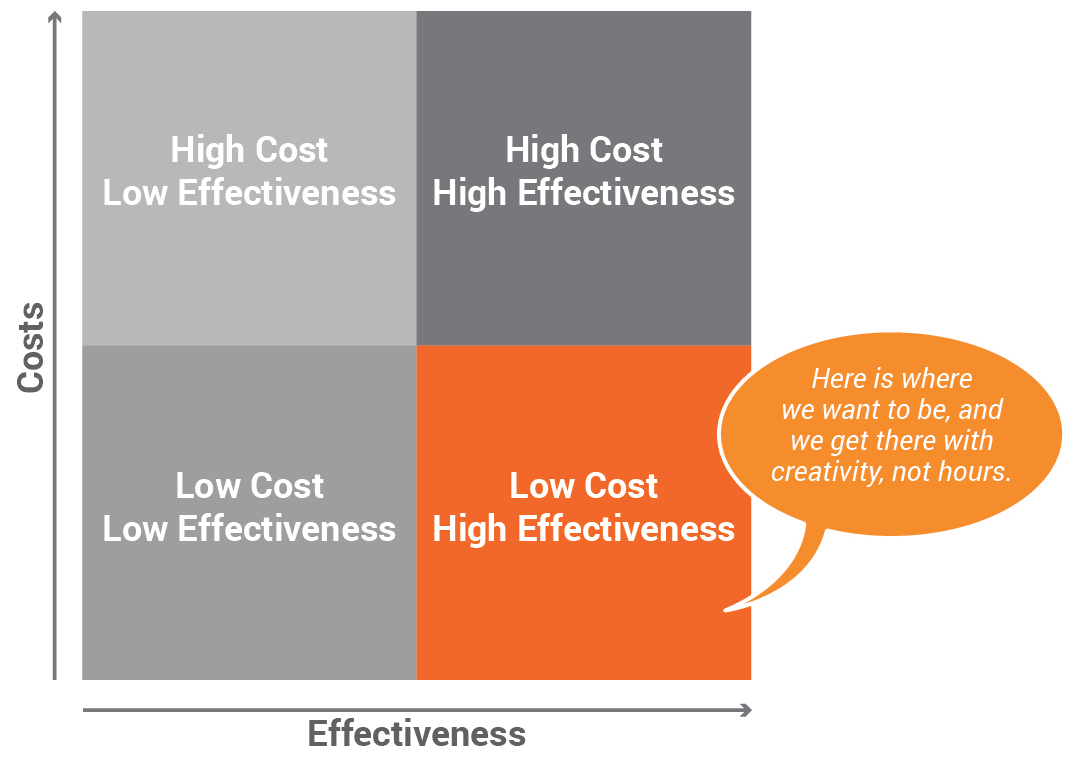MyHEAT
201-1228 Kensington Rd NW
Calgary, AB T2N 3P7
Canada
2 Years with a 4-Day Work Week
52 long weekends per year? Yes Please!
In the summer of 2018 after reading an article from Tower Paddle Boards about their 5-hour work day, MyHEAT decided to follow their lead and try a 5 hour day to improve productivity and work satisfaction. I am not sure if it was being free from work at 1:00, or just the change, but it was definitely energizing. There was a new sense of urgency during the workday that seemed to provide a sharper focus and lead to better quality work. The extra hours in the afternoon were a godsend for the team, I used my extra time for afternoon mountain bike rides in the nearby Rocky Mountains, rekindling a passion that had dwindled with the demands of work and family.

The moment we realized the need to pivot

The whole team felt as though we were being just as productive in 5 hours as an 8-hour day, and those hours not spent in the office were put to great use in our personal lives.
With only 5 staff, limited revenue, and two customers, it was a struggle to confirm any productivity improvements, but we did notice some issues with the 5-hour days as we moved into fall of 2018:
- It felt difficult to schedule all of our external meetings within the 5-hour window;
- Meetings seemed to really disrupt our flow, and without them we were slowly becoming out of touch; and
- It was harder to manage and foster a collaborative environment required to get the most out of a small team given our flexible work hours.
4-day work week: The ground rules
Still, seeing the benefits of a better work-life balance amongst employees, we decided to continue to experiment with our working hours to see if there were other scenarios more suited for our business. After some internal discussion, we decided to try a 4-day work week, with the following rules:
- We would keep a standard workday of 8 hours, working Monday to Thursday to keep everyone working at the same time to support collaboration;
- We decided to work through statutory holidays if they fell between Monday and Thursday, taking Friday in-lieu; and
We would all attempt to do our personal errands on Friday, Saturday and Sunday to keep Monday to Thursday free for work (with an understanding that it’s a messy world, and sometimes life gets in the way).
Results of a 4 day work week – resounding success, or disastrous failure?
With these ground rules in place, we embarked on a 4-day work week, and after almost two years, I have to say that I would really struggle to go back to working 5 days per week! Having every weekend be a long one is nothing short of amazing for both my work and personal life. Over the past two years we have:
- Solved a bunch of difficult technical challenges requiring teamwork and creativity;
- Grown our revenue by over 200%, adding 5 new customers along the way; and
- Expanded our team from 5 to 14!
Could we have accomplished all this with a standard 5-day work week? Maybe, but if we can achieve such success with a 4-day week, why would we want to? Having 52 long weekends, plus 3 weeks of vacation gives us so much more flexibility. I do have a theory on why the 4-day work week seems to be working so well for us:
My theory of productivity at MyHEAT:
Most productivity gains come from creative solutions, so it’s less about the number of hours, and more about ensuring staff have the freedom to be as creative as possible.
The crux of creativity
All of our work at MyHEAT is creative, from our data scientists solving unique machine learning problems, to our web developers building intuitive interfaces for a new product, to our marketing and sales folks figuring out how to present and sell our solution, to our project staff working to ensure we get positive results from our randomized control trials. Everything we do at MyHEAT requires creativity to be at our best.
The majority of all the problems we are working to solve have more than one potential solution, and I would categorize most solutions as fitting into 4 different quadrants based on cost and effectiveness:

Most solutions range from high cost and low effectiveness, to low cost and high effectiveness. As a start-up we want to be firmly in the lower right quadrant. And you get there not with long mindless hours, but with creativity. So at MyHEAT we want a culture that fosters creativity, and 4-Day work week is a great ingredient for that.
In my experience in building software over the past 20 years, the most productive developers tend to build solutions in the lower right quadrant. It’s also been my experience that long hours and stress often results in solutions in the upper left quadrant. At MyHEAT we are building a culture that strives to create solutions that are low cost, and highly effective.
Creative minds need time to think
The challenges of a 4-day work week have been limited. We have had 2 or 3 occasions over the past year where teams or individuals have to work a Friday or even an entire weekend to deliver for a deadline. The nice part is that the 4 day weeks that follow naturally help recharge after a big effort.
Overall, a 4-Day work week gives our creative minds time to think deeply enough about our solutions to find the super effective outcomes we want, while providing enough structure to build a team with trust, purpose, autonomy, and mastery. (More about trust, purpose, autonomy and mastery in some future posts.)
I’d love to hear if your company has implemented any alternate work styles and how you think it’s affected your productivity!
Written by:
Darren Jones, CEO at MyHEAT


